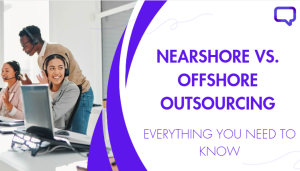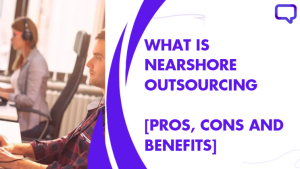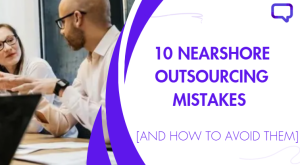In the USA, call center services generally cost between $26 and $30 per hour for standard support. For more specialized assistance, such as tier 2 tech support, rates can rise to $30 to $50 per hour.
In contrast, nearshore services in Eastern Europe typically range from $14 to $20 per hour. Offshore centers in countries like Pakistan often offer rates as low as $7/hr, such as HiredSupport. This call center company has its back office in Pakistan and provides top-tier services while keeping the prices affordable.
Let’s dive into the call center pricing guide without any further ado.
Factors Impacting Call Center Pricing
Here are some factors that can impact the pricing of a call center:
- Call Arrival Rate
- Percentage of Calls Blocked
- Average Call Abandonment
- First Response Time
- Average Handle Time
- Agent Utilization Rate
The factors above will help businesses assess which call center suits their needs, hence allowing them to make wise decisions.
Pricing Breakdown: Taking Your Call Center Operations In-House
If you are about to kickstart your call center operations, you must be aware of the pricing strategy and whether it would be a viable option for your business.
1. Labor Expenses and Benefits
Labor costs are a significant part of any call center’s expenses. Your call center agents play a crucial role in keeping daily operations running smoothly. The number of agents you employ directly impacts labor costs, as a larger team typically leads to higher expenses.
An average 4-person in-house call center might cost around $264,212 annually, which includes salaries, benefits, hiring costs, and software/hardware.
2. Technology Costs and Office Space
Digital tools and resources are essential for modern call center operations. This includes costs related to telecommunications, such as phone lines and telephony services. When creating an in-house call center team, it’s important to plan financially for the initial setup, ongoing maintenance, and regular usage of these services.
Here’s the pricing breakdown:
- VoIP System: $50 to $100 per seat per month, depending on the provider and features.
- CRM Systems and Other Software: Costs around $150 per seat per month.
- Office Lease: Costs vary widely depending on location, but a small office space in a city like New York could cost between $3,000 and $6,000 per month for about 1,000 square feet.
3. Service Costs
Service costs are critical to a call center’s overall budget, and many businesses outsource to save money. Common tasks include customer service, sales and telemarketing, and technical support.
Each function comes with its own costs, such as employee salaries, training expenses, and necessary tools or software to ensure top-notch service. Training new agents in-house can cost between $1,000 to $2,000 per agent, depending on the tasks’ complexity and the specialization level required.
4. Hidden Charges
In addition to the main expenses, it’s important to plan for other fees and hidden charges when budgeting for a call center. Setting up a contingency plan with careful budgeting will help manage unexpected costs. Some potential expenses to keep in mind include consulting setup or onboarding fees.
Here’s the pricing breakdown:
- Reporting and Analytics Charges: Using advanced analytics tools to monitor performance could add another $100 to $200 per user per month.
- Data Storage and Security: Cloud storage and security tools are crucial for safeguarding call center data. Expect to pay about $60 per user per month for essential data security tools.
Pricing Models for Call Centers
If the above pricing seems too much for you to invest, then outsourcing to a call center service provider would be the best option. Training agents and paying leases won’t be your headache anymore, but the provider’s.
Here are the different pricing models that you can choose from.
Here are the different call center pricing models that businesses should consider:
- Hourly Pricing Model
- Pay-Per-Minute model
- Pay-Per-Performance
1. Hourly Pricing Model
With hourly pricing, a company pays for the total hours worked by full-time agents dedicated to their brand. For instance, if 25 agents each work 30 hours a week managing customer service, the company would pay the provider for 750 hours of work per week at a flat rate.
In this model, it’s crucial to partner with a provider who excels at scheduling, as they will be responsible for assigning agents to match the call volume. A provider like HiredSupport, which charges $7/hr, can ensure efficient agent scheduling and reliable service.
Why Businesses Should Use an Hourly Pricing Model?
In other call center pricing guides, agents or service providers might be motivated to handle as many calls as possible within a certain timeframe, often at the expense of service quality.
However, with hourly pricing, agents and providers earn a consistent rate regardless of the number of calls they manage, allowing them to focus more on ensuring customer satisfaction.
Does Hourly Pricing Model Suit Your Business?
Hourly pricing models are ideal for companies with high call volumes that can support a full-time team of agents without significant downtime.
Additionally, businesses that want to encourage agents to dedicate ample time to each case to enhance customer experience may also find hourly pricing models beneficial.
2. Pay-Per-Minute Pricing Model
The pay-per-minute pricing model charges companies for the actual time, in minutes, that is spent handling calls or interactions.
For example, if a company has 5 agents and each agent spends 400 minutes a week managing calls, they would be billed for 8,000 minutes that month. Many call center providers offer a per-minute rate that decreases as the volume of minutes increases.
For instance, the first 1,000 minutes might be charged at $1 per minute, and the next 5,000 minutes at $0.75 per minute, and so on.
Why Should Businesses Use a Pay-Per-Minute Pricing Model?
The pricing model is simple and transparent, billing only for the exact time used—nothing more, nothing less. This flexibility allows easy scaling; if agents use more minutes, the cost increases for that month. Conversely, if call volume decreases, the payment adjusts downward accordingly.
Does a Pay-Per-Minute Pricing Model Model Suit Your Business?
Per-minute pricing is ideal for seasonal businesses with fluctuating or low call volumes because it charges only for the exact time used. This allows businesses to manage peak times efficiently without paying for agents’ idle periods during slower times.
3. Pay-Per-Performance
The pay-per-performance model is less common but can be an effective option for certain companies. In this approach, payments are tied to the number of transactions handled or specific results achieved.
For instance, a call center offering B2C inbound customer service might charge based on the number of customer emails responded to. Similarly, a provider of B2B outbound services could bill for the number of leads generated or new meetings arranged.
Why Businesses Should Use a Pay-Per-Performance Pricing Model?
For this pricing model, businesses receive exactly what they pay for. No matter how long it takes the agent to finish a task or how much work there is, you only pay for the completed tasks or transactions. This approach encourages providers and agents to work more efficiently, aiming to complete more tasks for your business.
Does a Pay-Per-Performance Pricing Model Model Suit Your Business?
Pay-per-transaction pricing models work well for companies with fluctuating volumes or occasional outsourcing needs. This model is ideal for businesses that have a set amount of work or want to get the most out of their efforts, as they only pay for the work that is completed.
Choosing the “Most Bang for Your Buck” Call Center
Businesses need to clearly understand what they are paying for and what is included in their call center services. Different call centers offer various pricing models, but they should always be transparent about what the rate covers and what services are provided.
Choosing a provider who prioritizes the quality of interactions and actions on behalf of the business can be advantageous in the long run. Even if a business is focused on short-term cost savings, investing in a provider with high service standards pays off over time.
Conclusion
Are you unsure about which call center to opt for? I would recommend choosing HiredSupport. This call center company has a 4.9/5 star rating on Clutch, making it a reliable option for businesses satisfied by the quality delivered by HiredSupport. This company has helped startups and enterprises achieve goals without compromising on quality.
Due to the presence of its virtual offices, the hourly rates begin from just $7/hr. This makes it the most affordable call center for your business to outsource. If you’re a newbie who isn’t familiar with the outsourcing industry, the good thing is that HiredSupport offers a 7-day risk-free trial to help business owners manage their expectations.
You can request a quote from their sales team (1 (800) 655-5891, email: [email protected]) to measure how much you can save by outsourcing to HiredSupport.


